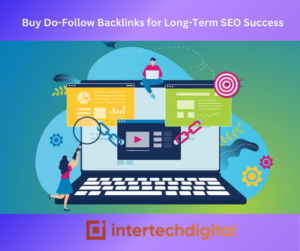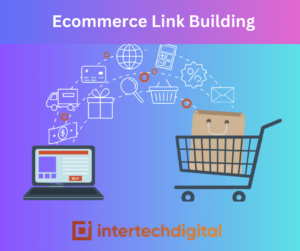The days when consumers’ primary consideration for purchases was price are long gone. Price still matters, but there are now also other considerations, such as brand uniqueness, reputation, and customer-focused return policies.
But how do those factors affect the decision to buy? Customers are difficult to read, and it can be difficult for merchants to determine how they stack up against the competition. It could seem that many decisions are made based only on intuition or guesswork, particularly for shops that are just getting started.
By assisting you in understanding your market, your target audience, your competitors, and your product, market research can help you reduce a lot of this uncertainty. Your chances of success significantly increase once you are aware of all of that.
Market research is carried out by a variety of organizations, and you can always seek assistance from them. However, if money is tight, you can conduct the study on your own. In this manual, we’ll explain how.

Market research: What is it?
A target market, including the businesses and individuals involved, is studied in market research to better understand its needs and preferences.
In essence, it helps you comprehend the demographic, sociological, cultural, socioeconomic, and personal characteristics of your target market. It will assist you in determining whether and how much of a demand there is for your product, as well as who is driving that demand. Additionally, it’ll assist you in comprehending the market environment.
In other words, market research is study of the environment in which your retail company operates. It will give you information about your target customer’s purchasing power, shopping interests, and relationship with competitors, among other crucial facts.
With the use of this knowledge, you’ll be able to develop goods that solve problems, market to customers successfully, and raise your chances of success.
Simply put, retail market research reveals who your target customers are and the reasons they would choose to do business with you.
The Best Way to Conduct Market Research for your Retail Operation
It’s entirely possible to carry out this research on your own, although some business owners choose to hire a market research company or consultant. In fact, because they enjoy interacting with customers and learning more about how customers perceive their businesses, many retailers actually prefer to handle their own market research.
If you’re a researcher yourself, you should be aware that market research has two components: primary research and secondary research. Reviewing secondary research materials, such as industry reports, trends, and case studies is advised as a starting point for your investigation. You will gain more insight into your preferred method of conducting your longer, more expensive primary research by beginning with this established data that someone else has already gathered.
Primary Methods for Market Research
Next, squat down and directly research the market. Use these techniques when conducting primary research:
1. Client Surveys
You can learn more about your target market by conducting customer surveys. Your survey’s questions will determine if you understand your target market, how competitive it is, and whether you get feedback on your product.
You may conduct consumer surveys using a number of free tools like Google Forms and SurveyMonkey. Use them if you already have a loyal following on social media or an active email list of readers.
don’t have a listenership yet? Submit the poll to pertinent Facebook Groups, online discussion boards, and Slack channels.
Pay for a service like Google Surveys if you need to reach a larger audience. This service also lets you to add targeting parameters for more focused and pertinent insights.
2. in-depth interviews with customers
One-on-one interviews with clients are known as customer interviews. Customers can be met in person, on the phone, or via video chat.
Customer interviews offer unmatched insights about your customers, their purchase motivations, and opinions on your brand and product because they are direct discussions (s).
You may make more informed business judgments by conducting customer interviews. You can build marketing text and store layouts that appeal to your audience by, for instance, paying attention to the language your potential customers use throughout the interview.
The secret is to use open-ended questions that motivate respondents to provide more in-depth responses as opposed to simple “yes” or “no” responses. Ask them their opinion of contactless payments, for instance, rather than whether they prefer to tap or insert their card while making a purchase.
By subtly altering the way you phrase your interview questions, you might urge the interviewee to think and gain good insights.
Do not forget that customer interviews don’t have to last for a lengthy time. Additionally, you can reward customers for their time by giving them something worthwhile. This could take the form of a lifelong membership, a free product, or a gift card.
3. Customer Feedback
Customer reviews can be a goldmine of useful consumer insights.
You don’t just have to research your own company; you can also research your competitors’ businesses to find out what their customers enjoy and dislike most, what they frequently complain about, and how they respond to negative reviews.
Additionally, the revelations you make here can direct the development of your products and inspire ideas for enhancing client satisfaction.
Make sure to get feedback from a variety of sources, including social media and review websites (think: Yelp, Amazon, and Google).
Reducing the likelihood of bias in review analysis is made easier by having a sizable and varied pool of customer reviews from people who represent your consumer base.
4. Contextual inquiry
A user research technique called contextual inquiry involves seeing and interviewing subjects as they carry out tasks within a context. It supports the validation of product concepts and enhances current user journeys, such as how customers use your store’s layout.
You may quickly find out how customers utilize and feel about your business, products, and purchasing procedures by watching how participants complete a task—ask them, for instance, to explain how they traverse your point-of-sale (POS) system.
Don’t forget to pay close attention to the nonverbal signs that participants use, such as their body language. This enables you to monitor and comprehend their behavior as well as how their mood shifts in response to a product display or in-store event.
What’s best? Contextual inquiries aren’t as formal, which enables you to obtain more accurate information.
5. Shopping for clues
Sending undercover researchers in the guise of customers to your or your competitors’ establishments can be an effective way for conducting market research.
You gain knowledge through real-time interactions with store staff while you go secret shopping. Additionally, it enables you to research your rivals and have access to data that is only available to their clients.
The ability of mystery shoppers to examine every area of the client experience is maybe their most significant capability
- Waiting and greeting times
- Knowledge and courtesy of the staff
- Product availability and variety
- Cleanliness, product display, and window display are all aspects of store design.
You can always pre-plan the visit (ask the researchers to assess certain specifics) or leave it open-ended, inviting the researchers to express their experiences.
6. Focus Groups
Focus groups are used to gather opinions on a product, service, concept, or marketing campaign from a group of six to ten people.
Focus group participants are methodically chosen based on their demographic characteristics. The interviewer’s job is to get responses from each participant based on pre-written questions.
Focus group sessions give insights in the respondents’ own words and are a low-cost, highly accurate technique of market research.
You can contract with a company to run focus groups for in-depth research. You may also set up an online focus group to find out what people think about any topic.
7. Sales Figures
This works well for existing retail establishments and entails analyzing already-available consumer and sales data.
These sales records are a veritable wealth of information because they detail customer purchase dates, amounts, payment methods, returns, and other details. Additionally, the information is private and exclusive to your company; nobody else has it.
Analyze it to determine who your devoted consumers are and which items they prefer, then utilize the knowledge you learn to develop marketing strategies that are most likely to be well received by these clients.
8. Employees
Ask sales representatives for their observations of consumer behavior or frequently asked questions they have heard from customers.
Insights from staff research can show you how well your visual merchandising, shop design, and sales promotions are working as well as how well you understand your clients.
You may teach your team to upsell and build popular product bundles by asking them to observe client motivations and the things that they regularly purchase together.
Utilize Market Research to Grow Your Retail Business
Simply put, market research is crucial. It can teach you how to develop consumer favorites, outperform your rivals, and deliver top-notch customer service.
Likewise, market research is perpetual. Market research should be done regularly because it’s important to stay up to date with changes if you want to stay competitive.



